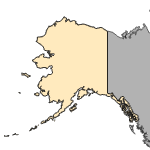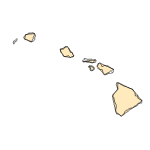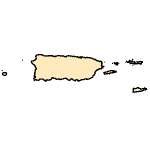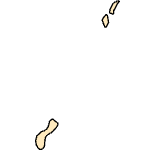Hysterocarpus traskii
(Tule Perch)
Fishes
Native Transplant |
|
Common name: Tule Perch
Taxonomy: available through
www.itis.gov
Identification: Moyle (1976a); McGinnis (1984); Page and Burr (1991). Original spelling ends with ii (Nelson et al. 2004).
Size: 15 cm.
Native Range: Formerly in low-elevation waters of the Sacramento-San Joaquin River drainage, as well as Clear Lake, Coyote Creek, and the Russian, Napa, Pajaro, and Salinas rivers. Now apparently extirpated from the Pajaro, Salinas, and San Joaquin rivers (Moyle 1976a). Lee et al. (1980 et seq.) provided a dot distribution map for the species.



|

Alaska |

Hawaii |

Puerto Rico &
Virgin Islands |

Guam Saipan |
Hydrologic Unit Codes (HUCs) Explained
Interactive maps: Point Distribution Maps
Nonindigenous Occurrences:
The Tule Perch was introduced in the early 1970s into O'Neill Forebay of San Luis Reservoir, and Los Banos Reservoir in Merced County, California (Moyle 1976a). McGinnis (1984) reported that it also has been introduced into a number of small lakes and ponds, such as Lake Merced in San Francisco, where the species is doing well.
Table 1. States with nonindigenous occurrences, the earliest and latest observations in each state, and the tally and names of HUCs with observations†. Names and dates are hyperlinked to their relevant specimen records. The list of references for all nonindigenous occurrences of Hysterocarpus traskii are found here.
Table last updated 1/17/2026
† Populations may not be currently present.
Means of Introduction: Presumably gained access to these areas via the California Aqueduct.
Status: Established in parts of California outside its native range (Moyle 1976a).
Impact of Introduction: The impacts of this species are currently unknown, as no studies have been done to determine how it has affected ecosystems in the invaded range. The absence of data does not equate to lack of effects. It does, however, mean that research is required to evaluate effects before conclusions can be made.
References: (click for full references)
Nelson, J. S., E. J. Crossman, H. Espinosa-Perez, L. T. Findley, C. R. Gilbert, R. N. Lea and J. D. Williams. 2004. Common and Scientific Names of Fishes from the United States, Canada and Mexico, Sixth Edition. American Fisheries Society Special Publication 29. Bethesda, MD.
Other Resources:
FishBase Summary
Author:
Pam Fuller, and Leo Nico
Revision Date: 4/30/2018
Peer Review Date: 10/8/2008
Citation Information:
Pam Fuller, and Leo Nico, 2026, Hysterocarpus traskii Gibbons, 1854: U.S. Geological Survey, Nonindigenous Aquatic Species Database, Gainesville, FL, https://nas.er.usgs.gov/queries/FactSheet.aspx?speciesID=668, Revision Date: 4/30/2018, Peer Review Date: 10/8/2008, Access Date: 1/17/2026
This information is preliminary or provisional and is subject to revision. It is being provided to meet the need for timely best science. The information has not received final approval by the U.S. Geological Survey (USGS) and is provided on the condition that neither the USGS nor the U.S. Government shall be held liable for any damages resulting from the authorized or unauthorized use of the information.